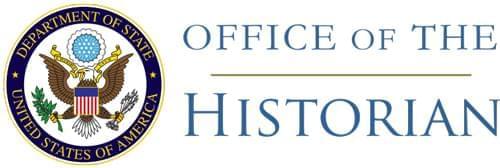127. Memorandum From the Under Secretary of State’s Staff Director
(Hartman) to the Members of the Senior Interdepartmental Group1
Washington, June 22, 1968.
SUBJECT
-
IRG/EA Paper: “US Policy on
Forthcoming Ryukyu Elections”
There is attached a paper on US policy toward the forthcoming Ryukyu
elections forwarded by the Acting Chairman, IRG/EA, for SIG approval.
The proposed policy has been approved by the IRG/EA.2 Unless some members would prefer a
meeting, Mr. Katzenbach would propose
to approve the recommended policy without convening the SIG.3?
We will be in touch with your staffs on this matter.
Attachment
Paper Prepared by the East Asian and
Pacific
Interdepartmental Regional Group
RYUKYU ELECTIONS
Conclusions and Recommendations4
I. The Problem
In November, the Ryukyuans will elect the Chief Executive of the
Government of the Ryukyu Islands (GRI) a
new legislature, and
[Page 290]
the Mayor
of Naha, the largest city. The fate of the friendly conservative forces
in these elections will directly and vitally affect the U.S.
administration of the Ryukyus. Opposition control of the Chief Executive
post alone, or in conjunction with control of the legislature, could so
adversely affect our administration as to threaten the use of our bases.
Moreover, the outcome of the election will have a direct bearing on the
future course of the reversion issue. This paper analyzes the U.S. stake
in the elections, the prospects of Ryukyuan conservatives, and
recommends policy action consistent with basic U.S. interests in the
Ryukyus and Japan.
II. Conclusions
- A.
- The election of the conservative candidate Nishime as Chief
Executive of the GRI, and the
election of a majority of the conservative Okinawa Liberal
Democratic Party (OLDP) members to
the GRI Legislature, are of crucial
importance to the U.S. A Nishime and OLDP victory offers the best promise of the necessary
modicum of Ryukyuan cooperation with U.S. administration and
military base operations. It would also thwart the local forces
pressing for immediate and unconditional reversion. The Japanese
Government and ruling conservatives consider that they have an
equally great stake in a Nishime/OLDP victory. In their view, a Nishime defeat would
impair Sato’s already eroded
political position and would give major impetus to the opposition
attacks against both their moderate reversion policy and the overall
U.S.-Japanese treaty relationship.
- B.
- The Chief Executive election between Nishime and the left-wing
candidate Yara is now a
toss-up. The outcome will depend principally on:
- 1.
- Nishime’s effectiveness as a campaigner and his ability to
organize his support and to exploit incipient divisive
forces within the opposition left-wing coalition;
- 2.
- Nishime’s ability to sell his gradualist approach to
reversion emphasizing progressive identification with Japan
(“ittaika”);
- 3.
- Actions by the U.S., the GOJ and the GRI
to give meaning to “ittaika” (identification with Japan)
through positive and popular actions;
- 4.
- The absence during the pre-election period of major base
issues inflaming the public and working to the opposition’s
advantage.
- C.
- The OLDP chances in the
Legislative election will depend not only on organization and local
district factors but on public acceptance of a gradual approach to
reversion, US/GOJ/GRI actions which demonstrate the
benefits of the approach, and the absence of major base issues,
including the wide spectrum of problems stemming from U.S. lease of
Ryukyuan land.
- D.
- Nishime and the OLDP are, with
Japanese conservative support, fortunately prepared to conduct the
election campaign with minimal U.S. support. In fact, they would
find U.S. official “neutrality” of advantage in establishing an
“independent” identity with the electorate.
III. Recommendations
-
A.
-
U.S. Posture
- 1.
-
Official neutrality: The U.S.
officially and publicly, must maintain an aloof, neutral
posture towards the elections. This posture is essential to
cover our bets in the event of a Yara victory and protect against valid
opposition claims of U.S. interference. Actions in support
of Nishime and the OLDP are
not precluded but must be limited, circumspect, [less than 1 line of source text not
declassified].
- 2.
-
Improving the climate: The U.S.
administration can make a major contribution to Nishime’s
prospects by actions directed at improving the welfare of
the Ryukyuans, increasing the credibility of Nishime’s
“ittaika” (identification with Japan) platform and
diminishing to the extent possible the public impact of base
operations.
-
B.
-
Specific Actions
- 1.
- U.S. acquiescence in GOJ
adoption of some form of Diet representation within the
terms of the Japanese Constitution and Article 3 of the
Peace Treaty in a manner and at a time redounding most to
Nishime’s benefit.5
- 2.
- Expediting major actions by the Advisory Committee with
maximum economic benefit and political appeal, including
such things as early extension by the GOJ of Japanese social security
and other welfare benefits to the Ryukyuans.
- 3.
- Measures to minimize off-base incidents by U.S. forces
personnel: Maximize publicity of the concern with which the
U.S. views such
[Page 292]
incidents, and maximize public awareness of disciplinary
actions which arise from such incidents. Improve level and
public image of U.S.–GRI
police cooperation.
- 4.
- If the military situation permits, withdrawal of the B–52s
at a time sufficiently prior to the election, so as to
reduce the impact of that basing on the election, and
avoiding if possible new military operations likely to
arouse public concern.
- 5.
- Continue to maintain meticulous control over military land
holdings, avoiding any incident or basis for new grievance.
This would include circumspection in any (a) land
acquisition, (b) termination of Ryukyuan licensed use of
U.S.-leased land, (c) establishing realistic land rentals
reflecting actual values.
- 6.
- Close coordination with the JLDP and GOJ on election planning and
actions.
[Omitted here is an in-depth discussion of background issues and of the
U.S., Ryukyuan, and Japanese stakes in the upcoming election.]
